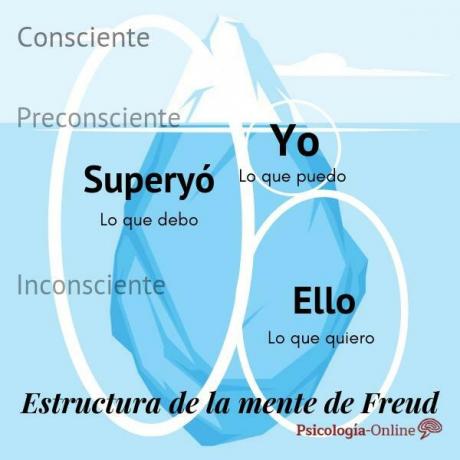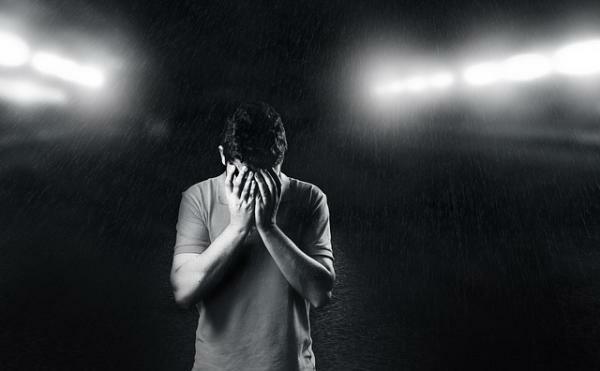
Psychoanalysis is one of the most popular theories in the study of the human mind and in the treatment of emotional affections; a theory that has been as much reviled as its author Sigmund Freud for his study and interest in structuring of the psyche, psychosexual development and in deep analysis of the moral influence on the health of the human being. This is why in this Psychology-Online article we explain what is psychoanalysis, what are its treatment methods, its history and some of the most recognized authors in its study.
Index
- Definition of psychoanalysis in psychology
- History of psychoanalysis
- The word as a method of treatment as the beginning of psychoanalysis
- The beginning of theories of free association, the interpretation of dreams and psychosexual development
- Authors of psychoanalysis
- Techniques of psychoanalysis
- Psychoanalysis books
Definition of psychoanalysis in psychology.
Psychoanalysis is a
Psychoanalysis has been so reviled for its proposal on the existence of the unconscious and the psychosexual implication in human behavior. Sigmund Freud, the medical neurologist forerunner of psychoanalysis, proposed that human behavior and personality come from a constant interplay of psychological forces operating at different levels of conscience: unconscious, preconscious and conscious.
Despite the fact that for several years psychoanalysis, as well as its author, has been designated as inoperative or ineffective by his own disciples and by other health professionals, he has managed to sustain and conserve his character essential in mental health, in social research and in medicine (especially in idiopathic physical symptoms).
Psychoanalysis proposes the investigation and treatment of emotional conflicts from a perspective of early life (childhood) of the person as well as failed acts, free association and dream interpretation.
History of psychoanalysis.
The scientific career of the neurologist Sigmund Freud begins at a waning time for the philosophy of nature, which conceived the universe as an organism consisting of forces and motions in perpetual contradiction. A principle of the metaphysical vision of reality was the well-known law of polarities, with which he proposed the existence of antithetical forces such as heat and cold, night and day, sleep and vigil. Freud then showed great enthusiasm for the philosophy of nature, and his desire to study medicine was determined by listening to Carl Brühl's lecture on the comparative anatomy, where he also had the opportunity to read an excerpt from The Nature of theologian C. Tobler. This happened in 1873, before Freud finished high school.
Josef Breuer appears deeply associated with the initial phase of psychoanalysis due to his collaboration with Sigmund Freud in the hysteria investigation, for this very reason his name is eluded as a symbol of a notable researcher
The word as a method of treatment as the beginning of psychoanalysis.
It cannot be avoided that determinism and the mechanism of Helmholtz school they had a constant and permanent influence on Freud's psychological theories, as well as in his pre-psychoanalytic phase as in his entire journey. This influence is evident in the research he conducted with Breuer.
Josef and Sigmund met at the end of 1870 and between 1882 and 1885 a fairly close friendship was formed where they shared several common scientific interests. In 1890 due to the economic situation he was going through and due to the resistance to the Jews occupying important positions in the academy, Freud withdrew from the academic career dedicating thereafter as a salaried physician of brain physiology and neurology at the prestigious clinic of Dr. Theodor Meynert. This is where Freud specializes in diseases of the nervous system and by his practice in treating patients with mental pathologies. He became increasingly interested and devoted to the study of these phenomena, especially the symptoms of hysteria. This is where he discovers that in the word are the fundamental principles to reach the unconscious and thus achieve a cure for alleviate the discomforts of your patients (beliefs, fantasies, memories, conflicts, thoughts, ideals, desires, feelings and purposes). The deeper he went into the depths of the patient's psyche, the closer he got to the source of his problems.
In this way, through his interpretations, Freud helped put into words what was in his unconscious starting from the hypothesis: where everything what is experienced in childhood leaves deep traces, being stored in our unconscious without us noticing it and thus determines our behaviors adults.
When the patient realizes the origins of his conflicts, he can begin to change ideas about himself.
Sigmund Freud's early influences
Freud receives a scholarship to study in Paris with the famous neurologist Jean Martín Charcot. J. Charcot, the most influential French neurologist of the time, attached importance of scientific interest to hysterical symptoms that until then had been considered simulation products. Charcot claimed that hysteria was the product of a hereditary degeneration of the brain and for this he used hypnosis methods in your treatment. He also demonstrated that hysterical symptoms could be provoked and eliminated by hypnotic suggestion, thereby establishing a relative nature to the causal neurological factors.
At that time, any symptoms that could not be explained were attributed to some type of hysteria and since there was no apparent cure, doctors recommended electrotherapy, massages, thermal baths or rest. This is also where Freud proposes that neurosis is a personality disorder and not a disease of the nervous system, thus neurosis for Freud arose from conflicts, unresolved situations or frustrations and manifests itself in our behaviors.
Charcot's knowledge intensified Sigmund Freud's interest in hysterical phenomena, but it also intensified him. They were disappointed to realize that Charcot had no interest in studying the psychological mechanisms underlying the symptoms.
In 1882 Breuer and Freud discovered a variant of the hypnotic method. Charcot and Liébault used hypnosis to make conscious psychic content that until then had been inaccessible. Breuer and later Freud used hypnosis to interrogate the sick subject about the history of the emergence of his symptom, which he could not fully communicate but partially in a state waking. Since then, Sigmund's interest in addressing the central structuring of his therapeutic interventions was evident: the elaboration of the life history of the subject.
In 1886 Freud returns from France to Vienna, and meets Breuer who confesses that he has treated a case of hysteria by hypnotizing a woman. patient, Berta Pappenhem (Anna O), a young woman whose legs and arms were paralyzed, she saw poorly, coughed and did not understand when she told him they spoke. Freud prefers not to hypnotize her and let her speak whatever comes to mind (fantasies, dreams, memories that were freely associated) and at the end of her story Anna O felt relieved, through her word she begins her healing process - free association.
The beginning of theories of free association, the interpretation of dreams and psychosexual development.
Freud discovers that free association is not the only way to reach the unconscious, but that dreams also express unmanifest wishes. It is when in 1896 he wrote his book «Interpretation of dreams». In this study he also explains that through dreams it is also possible address situations rooted in the unconscious.
In 1905 Freud published his research in three essays on sexual theory. Here he links pleasure with sublimation; sexual desires are impulses that seek the first pleasures we had. It is for this reason that Freud separates the genital from the sexual (men and women obtain sexual pleasure not only from the stimulation of the genital area but all surfaces of the body are erogenous zones).
Stages in psychosexual development
Freud proposed that people partially satisfy those desires in sex life and in dreams, this is how he distinguishes three stages in psychosexual development:
- The oral stage where the greatest satisfaction of the baby is provided by the food, therefore the pleasure is obtained by sucking but when the mother removes the breast (weaning) the baby feels displeasure.
- The anal stage: in the second stage the baby feels pleasure in releasing and holding.
- The phallic stage or stage three appears at three or four years when the child discovers that by bringing his hands to the genital area They get pleasure and start the curiosity, anguish and confusion that cause the difference of the sexual anatomy of the child and girl. Freud proposes then that it is up to 5 and 6 years that the child enters the phase of the Oedipus complex (feelings of the boy towards the mother and of the girl towards the father enter into conflict) feeling love and jealousy, rivalry and dependence. These feelings Freud proposes that will influence the formation of his character, his individualism and his sexual orientation.
The structure of the mind
During the First World War Sigmund Freud continued to search for answers to a basic neurotic conflict: what we want vs what we do. It is here that Freud proposes that all our behaviors were at the service of reducing this tension (elevation of psychic energy), at the same time postulating its psyche model:
- The id: primary impulses.
- The I: acts as a guide to reality, an inhibitor of unconscious impulses, which is what constitutes a defense mechanism.
- The superego: it is the look of the parents over their own.
Also during the First World War, Freud exposed the difference between morality and moral consciousness: he thus demonstrated that his theory could also be applied in the behavior of society. Freud said that morality had a superego charge (an imposition) and that moral conscience had roots in the repressed part of society.

Authors of psychoanalysis.
To understand psychoanalysis it is essential to know its main representatives
1. Sigmund Freud (1859-1939)
Austrian neurologist of Jewish origin, forerunner of psychoanalysis. He studied in Paris with the famous and renowned neurologist Jean charcot, the use of hypnosis as a treatment for hysteria. Returning to Vienna with the support of his old friend Josef Breuer develop the cathartic method. Through further research he was replacing the use of hypnotic suggestion (catharsis) by free association and the interpretation of dreams.
2. Carl Jung (1875-1961)
Psychiatrist and important collaborator psychologist and disciple of Sigmund Freud. Founder of the deep psychology; his theory is interested in the functional relationship between the psyche and its products (its culture). So he is inclined to use the methodology of anthropological, philosophical, religious origin, dream interpretation, art and alchemy. In the following article they are exposed the 8 personality types according to Jung.
3. Alfred Adler (1870-1937)
Austrian psychotherapist, collaborator and disciple of Sigmund Freud, but like Jung, he separates from him and his theory by disagreeing on his theoretical points. Founder of the school of individual psychology. The main theories of him are: the inferiority and superiority complex. In addition, Adler was also an educator of renowned thinkers and therapists, although later they too separated from his theoretical points: Viktor frankl and Rudolf Allers. He exerted great influence on great neo-psychoanalysts such as Erich fromm, Gordon Allport, Karen Horney and Albert ellis.
4. Melanie Klein (1882-1960)
Austrian psychoanalyst, she brought great insights into child development from a psychoanalytic perspective.
5. Jacques Lacan (1901-1981)
French psychiatrist and psychoanalyst. He based his theories on the analysis of Freud's reading, adding elements to psychoanalysis such as philosophy, structural linguistics, and structuralism. Lacan was considered as a return to Freud, but also as someone who reinterpreted Freudian concepts. He opposed many of the precepts of the International Psychoanalytic Association (such as the rejection of such extensive and daily sessions by orthodox psychoanalysts, thus proposing shorter sessions), but he also pointed out to several psychoanalysts of his time that they had altered, misrepresented, biased and distorted the theory of Freud. One of his most important contributions was the unconscious as language.
Techniques of psychoanalysis.
From a point in reading Freud, it can be stated that there are no psychoanalytic techniques, since nobody can teach anyone to analyze or listen. Freud throughout his theory speaks of techniques, but he only exposes one as the basis of psychoanalysis: free association. Unlike other theories (for example the Gestalt with the empty chair, the exchange of roles, imaginary inductions).
Free association consists in that the patient express all your ideas in the sessions, all your occurrences, images, emotions, memories, feelings and thoughts as they are presented, without selecting or structured, although what is said may seem meaningless, incoherent or of little interest.
Theoretical basis of free association
Freud then exposes free association as the fundamental rule of the psychoanalytic operation, with this We understand, as proposed by Juan Manuel Martínez (2020), there is a strict relationship between theory and practice; there are certain theoretical elements for Freud to propose free association as a fundamental rule. In the Freudian model those aspects or experiences that are very unpleasant for the system are repressed, that is, an eviction effort is made and this quickly turns them into repressed content and therefore dynamically unconscious. By this we mean that if we wanted to access certain memories, we could not do so since they are outside and inaccessible to consciousness. Thus Freud proposes that as the symptomatic conformation is composed of the return of everything repressed, the psychoanalytic clinical method would have to be a way of remembering that in a different way than the symptomatic repetition "remember-repeat and rework", since there is a clear opposition between remembering and repeating: when the repressed scene is put into words it no longer causes them to be repeated symptomatically, and this is the cure for the psychoanalytic approach.
Role of free association
Freud thought that the dynamic forces that make up the psychic apparatus (the unconscious is always fighting or pushing to get out and the defense always pushes in the opposite direction to prevent out). So the free association method Its function is to try to diminish the defense and allow that unconscious content to come out.
Free association application
In Freud's book Psychopathology of Everyday Life, it is proposed that there are certain compromise formations that allow that unconscious content to come out (for example, the joke, slip, failed act, symptom and dream). What free association does is to favor that there is less control due to lack of defense over what is being said and that unconscious contents emerge. So saying everything that comes to mind, we are going to achieve that in some way or at some point some of that content unconscious exit and it will be the task of the psychoanalyst to hold on to it and redirect that material to the traumatic origin initial.
Psychoanalysis books.
To continue learning and deepening psychoanalysis, the following bibliography is recommended:
- Psychoanalysis for Beginners (2002) by Iván Ward and Oscar Zarete.
- The interpretation of dreams (1899) by Sigmund Freud.
- Introduction to psychoanalysis (1917) by Sigmund Freud.
- Psychopathology of everyday life (1901) Sigmund Freud.
- The triumph of religion by Jacques Lacan.
- The seminar by Jacques Lacan (1994).
This article is merely informative, in Psychology-Online we do not have the power to make a diagnosis or recommend a treatment. We invite you to go to a psychologist to treat your particular case.
If you want to read more articles similar to What is psychoanalysis, we recommend that you enter our category of Basic psychology.
Bibliography
- Juan Manuel Martinez. (2020). Free association in Lacan. Mexico


